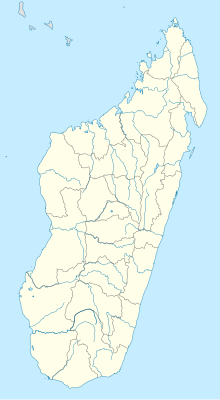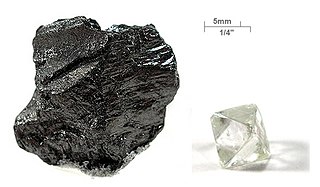
Carbon is a chemical element with the symbol C and atomic number 6. It is nonmetallic and tetravalent—its atom making four electrons available to form covalent chemical bonds. It belongs to group 14 of the periodic table. Carbon makes up about 0.025 percent of Earth's crust. Three isotopes occur naturally, 12C and 13C being stable, while 14C is a radionuclide, decaying with a half-life of about 5,730 years. Carbon is one of the few elements known since antiquity.
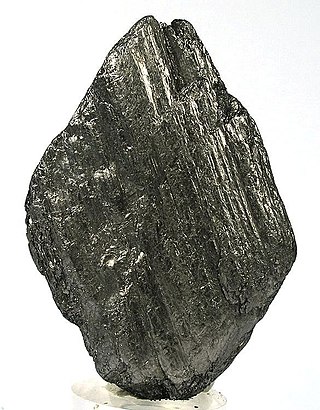
Graphite is a crystalline form of the element carbon. It consists of stacked layers of graphene. Graphite occurs naturally and is the most stable form of carbon under standard conditions. Synthetic and natural graphite are consumed on large scale for uses in pencils, lubricants, and electrodes. Under high pressures and temperatures it converts to diamond. It is a weak conductor of heat and electricity.

Mining is the extraction of valuable geological materials from the Earth and other astronomical objects. Mining is required to obtain most materials that cannot be grown through agricultural processes, or feasibly created artificially in a laboratory or factory. Ores recovered by mining include metals, coal, oil shale, gemstones, limestone, chalk, dimension stone, rock salt, potash, gravel, and clay. Ore must be a rock or mineral that contains valuable constituent, can be extracted or mined and sold for profit. including a valuable mineral Mining in a wider sense includes extraction of any non-renewable resource such as petroleum, natural gas, or even water.

Ore is natural rock or sediment that contains one or more valuable minerals concentrated above background levels, typically containing metals, that can be mined, treated and sold at a profit. The grade of ore refers to the concentration of the desired material it contains. The value of the metals or minerals a rock contains must be weighed against the cost of extraction to determine whether it is of sufficiently high grade to be worth mining, and is therefore considered an ore. A complex ore is one containing more than one valuable mineral.

The seabed is the bottom of the ocean. All floors of the ocean are known as 'seabeds'.

Asteroid mining is the hypothetical exploitation of materials from asteroids and other minor planets, including near-Earth objects.

Uranium mining is the process of extraction of uranium ore from the ground. Over 50 thousand tons of uranium were produced in 2019. Kazakhstan, Canada, and Australia were the top three uranium producers, respectively, and together account for 68% of world production. Other countries producing more than 1,000 tons per year included Namibia, Niger, Russia, Uzbekistan, the United States, and China. Nearly all of the world's mined uranium is used to power nuclear power plants. Historically uranium was also used in applications such as uranium glass or ferrouranium but those applications have declined due to the radioactivity of uranium and are nowadays mostly supplied with a plentiful cheap supply of depleted uranium which is also used in uranium ammunition. In addition to being cheaper, depleted uranium is also less radioactive due to a lower content of short-lived 234
U and 235
U than natural uranium.

The mining industry of the Democratic Republic of the Congo produces copper, diamonds, tantalum, tin, gold, and more than 63% of global cobalt production. Minerals and petroleum are central to the DRC's economy, making up more than 95% of value of its exports.
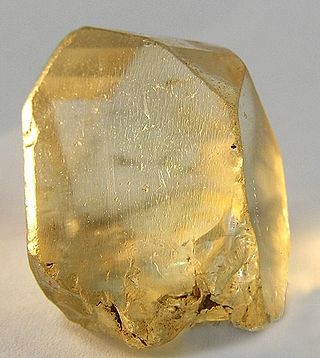
The mining of minerals in Nigeria accounts for only 0.3% of its gross domestic product, due to the influence of its vast oil resources. The domestic mining industry is underdeveloped, leading to Nigeria having to import minerals that it could produce domestically, such as salt or iron ore. The rights to ownership of mineral resources is held by the Federal Government of Nigeria, which grants titles to organizations to explore, mine, and sell mineral resources. Organized mining began in 1903, when the Mineral Survey of the Northern Protectorates was created by the British colonial government. A year later, the Mineral Survey of the Southern Protectorates was founded. By the 1940s, Nigeria was a major producer of tin, columbite, and coal. The discovery of oil in 1956 hurt the mineral extraction industries, as government and industry both began to focus on this new resource. The Nigerian Civil War in the late 1960s led many expatriate mining experts to leave the country. Mining regulation is handled by the Ministry of Solid Minerals Development, who are tasked with the responsibility of overseeing the management of all mineral resources in Nigeria. Mining law is codified in the Federal Minerals and Mining Act of 1999. Historically, Nigeria's mining industry was monopolized by state-owned public corporations. This led to a decline in productivity in almost all mineral industries. The Obasanjo administration began a process of selling off government-owned corporations to private investors in 1999. The Nigerian Mining Industry has picked up since the "Economic Diversification Agenda", from Oil & Gas, to Agriculture, Mining, etc., began in the country.

The mineral industry is one of the main sectors of the Armenian economy and in 2017 accounted for 30.1% of its exports.

Natural resource economics deals with the supply, demand, and allocation of the Earth's natural resources. One main objective of natural resource economics is to better understand the role of natural resources in the economy in order to develop more sustainable methods of managing those resources to ensure their availability for future generations. Resource economists study interactions between economic and natural systems, with the goal of developing a sustainable and efficient economy.
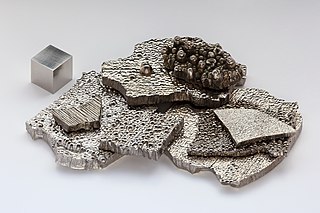
Cobalt is a chemical element with the symbol Co and atomic number 27. As with nickel, cobalt is found in the Earth's crust only in a chemically combined form, save for small deposits found in alloys of natural meteoric iron. The free element, produced by reductive smelting, is a hard, lustrous, silver metal.
Copper mining in the Democratic Republic of the Congo mainly takes place in the Copper Belt of the southern Katanga Province of the Democratic Republic of the Congo.
Mining in North Korea is important to the country's economy. North Korea is naturally abundant in metals such as magnesite, zinc, tungsten, and iron; with magnesite resources of 6 billion tonnes, particularly in the North and South Hamgyong Province and Chagang Province. However, often these cannot be mined due to the acute shortage of electricity in the country, as well as the lack of proper tools to mine these materials and an antiquated industrial base. Coal, iron ore, limestone, and magnesite deposits are larger than other mineral commodities. Mining joint ventures with other countries include China, Canada, Egypt, and South Korea.
The Kanyika mine is an open pit mine which extracts niobium ore from a large deposit located in northern Malawi in the Northern Region, about 250 kilometers north of Lilongwe. It will be the second-largest mining operation in the country, behind the Kayelekera mine. Kanyika represents one of the largest niobium mineral resource in Malawi having estimated resources of 60 million tonnes of ore grading 0.29% niobium metal. The mine is the main project of the Australia-based Globe Metals & Mining Ltd.
The Ampasindava mine is the site for a possible rare earths mine in Madagascar. The concession is located in the municipality of Mangaoka, Diana Region in northern Madagascar on the eastern side of the Ampasindava Peninsula. The deposit has reserves amounting to 130 million tonnes of ore grading 0.08% RE. The mine is owned by Tantalus Rare Earths Malagasy Sarl. In 2019, ISR Capital signed a memorandum of understanding with the China Nonferrous Metal Mining Group to develop the mine. Conservation groups have opposed development of the mine, pointing to possible damage the mine could have on wildlife, such as Mittermeier's sportive lemur which is native to the peninsula. As of September 2020, Reeenova applied for a full license to begin mining the deposit.
The Green Giant mine is one of the largest vanadium mines in Madagascar. The mine is located in Betioky Sud in Atsimo-Atsinanana. The mine has reserves amounting to 59.2 million tonnes of ore grading 0.68% vanadium. In August of 2007, the Canadian company Uranium Star Corp announced an agreement where it would buy a 75% ownership stake in the mine from Madagascar Minerals and Resources Sarl, and then bought full ownership in 2009. An aerial survey was conducted in 2007 and samples were drilled in 2008. Uranium Star Corp rebranded as Energizer Resources Inc in December 2009, and then as NextSource Materials Inc in April 2017. The mine is 11 kilometers from the Molo mine, which is also owned by NextSource.
Westwater Resources, Inc. (WWR), is an explorer and developer of US-based mineral resources essential to clean energy production. The company has operated some uranium facilities in the past, however they have recently been exploring lithium and graphite, anticipating a rise in demand of battery related materials due to accelerating electric vehicle production.

The mining industry of Madagascar is on a small scale, centred mainly around remote locations with large mineral deposits. Mining potential is noted in industrial and metallic minerals, energy, precious and semi-precious stones, as well as ornamental stone. The mining sector was neglected by the government for decades prior to the mid-2000s. In 2013, the mining industry, a main source of foreign investment, was struggling due to "low metals prices and distrustful companies", attributed to a 2009 coup.
Twangiza Mine is an open pit gold mine in South Kivu province of the Democratic Republic of the Congo (DRC) which started operations in 2012. Production has been disrupted by attacks from rebel militias.
